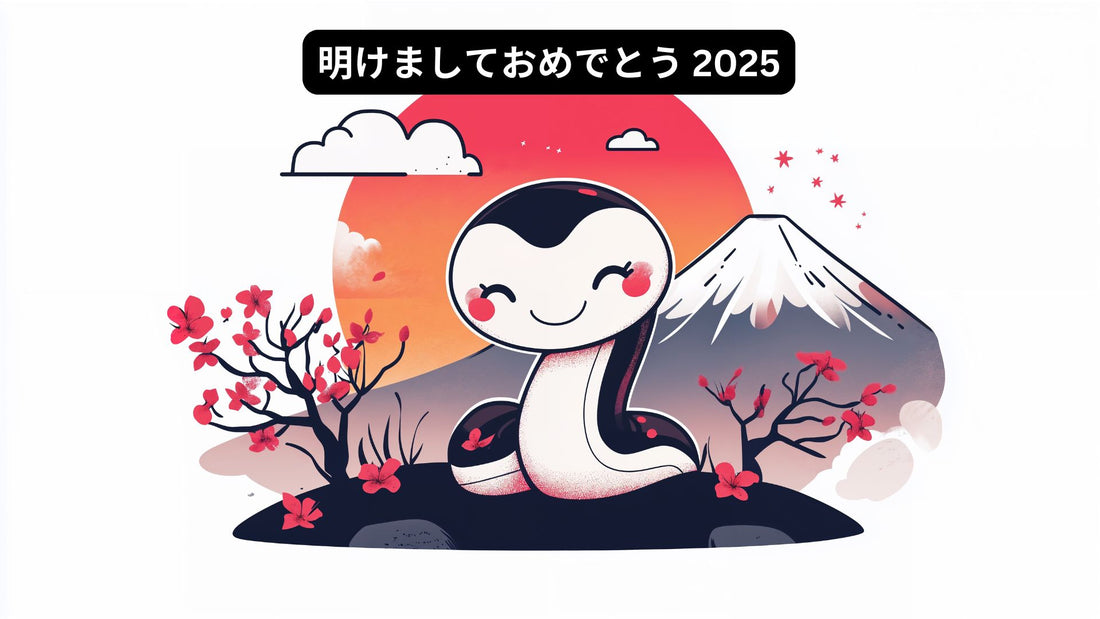
7 Fun Facts About Japanese New Year Traditions
Japanese New Year, or Oshogatsu (お正月), is one of the most important holidays in Japan. It's a time for family, reflection, and starting fresh. Unlike the Western New Year, Oshogatsu is traditionally celebrated for multiple days, filled with unique customs and symbolism. Let's dive into seven fun facts about these fascinating traditions:
1. Ringing in the New Year 108 Times: Joya no Kane
As midnight approaches on New Year's Eve, a profound ritual called Joya no Kane takes place in Buddhist temples across Japan. A large bell is struck 108 times, symbolizing the cleansing of 108 earthly desires and negative emotions, according to Buddhist beliefs. This solemn act allows individuals to enter the new year with a purified spirit, ready to embrace new beginnings.
2. Decorations with Meaning: Kadomatsu and Shimekazari
Kadomatsu, arrangements of pine, bamboo, and plum branches, are placed at entrances to welcome ancestral spirits and the toshigami, bringing good fortune. Shimekazari, sacred straw ropes decorated with various symbolic items, are hung above doorways to ward off evil spirits and mark a sacred space.
3. Osechi Ryori: A Feast for the Eyes and the Soul
Osechi Ryori (お節料理) are traditional New Year's foods, beautifully arranged in tiered lacquer boxes. Each dish has a special meaning, representing wishes for good health, prosperity, and happiness in the coming year. For example, kazunoko (herring roe) symbolizes fertility, kuromame (black soybeans) represent good health and hard work, and tazukuri (candied sardines) are associated with a bountiful harvest.
4. First Temple Visit of the Year: Hatsumode
Hatsumode (初詣) is the first temple or shrine visit of the year, typically made during the first three days of January. Millions flock to religious sites to pray for good fortune, health, and happiness. It's a vibrant scene, with people offering prayers, purchasing lucky charms, and returning the previous year's amulets.
5. Otoshidama: Money in Envelopes
Children in Japan eagerly anticipate Otoshidama (お年玉), a tradition where they receive money gifted by adult relatives in small, decorated envelopes called pochibukuro. Similar to the Chinese hóngbāo or the Scottish handsel, this custom is meant to bring good luck and blessings to children. The amount given is usually the same for all children in the family to maintain fairness.
6. Lucky Bags: Fukubukuro
Shopping for fukubukuro (福袋), or "lucky bags," is a popular New Year's tradition. These mystery bags, sold at various stores, contain an assortment of goods at a discounted price. It's a fun way to start the year with a surprise and potentially snag some great deals, although the contents can sometimes be a gamble!
7. Dream of Fortune: Hatsuyume
The first dream of the new year, known as hatsuyume (初夢), is believed to foretell one's luck. This refers to the dream one has on the night of January 1st. Seeing Mount Fuji, a hawk, or an eggplant in your hatsuyume is considered incredibly auspicious, promising success and good fortune.
Conclusion
Japanese New Year is a time rich in tradition and symbolism. From the special foods to the meaningful decorations and customs, Oshogatsu offers a unique glimpse into Japanese culture and its deep respect for the past, present, and future.
